When selecting new plants for your garden Yellowhead County’s Agricultural Services is asking residents to do a little research to make sure what you are planting is not invasive.
The Weed Control Act of Alberta prohibits the growth and spread of certain plants that are commonly found in gardens and flower beds. Unfortunately, many of these plants have escaped from gardens and landscapes where they were originally cultivated and they now pose a significant threat to native plant communities, agriculture, aesthetics and industry.
With the ever-growing online ordering world, it is now easier than ever to purchase plants and seeds from outside our province. Often the companies selling these plants or seeds are not located in Alberta or even in Canada, so what is prohibited here may not be the same for where they are located.
Local nurseries or wholesale suppliers can also unknowingly ship in plants from out of Province that are regulated under the Weed Control Act of Alberta. This is why it’s so important to always do your research on any new plants you are considering purchasing.
There are two categories of invasive species. Prohibited Noxious (must be destroyed) and Noxious (must be controlled).
Listed below are some of the most commonly found ornamental invasive species in Yellowhead County:
Himalayan Balsam (Impatiens glandulifera) – Category: Prohibited Noxious
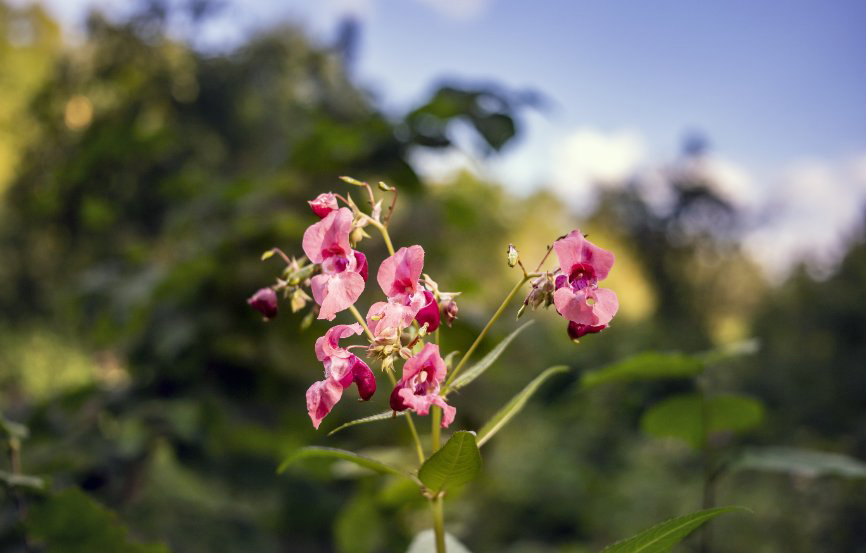
The fast-growing Himalayan Balsam has showy, irregular, pink-purple-white flowers with five petals. It grows 1-3 metres tall and has large oblong leaves with serrated edges. Roots are shallow and fibrous. Seed pods explode when ripe and can shoot seeds up to 10m.
For more information on identification and prevention, visit https://abinvasives.ca/fact-sheet/balsam-himalayan/
Bighead Knapweed (Centaurea macrocephala) – Category: Prohibited Noxious
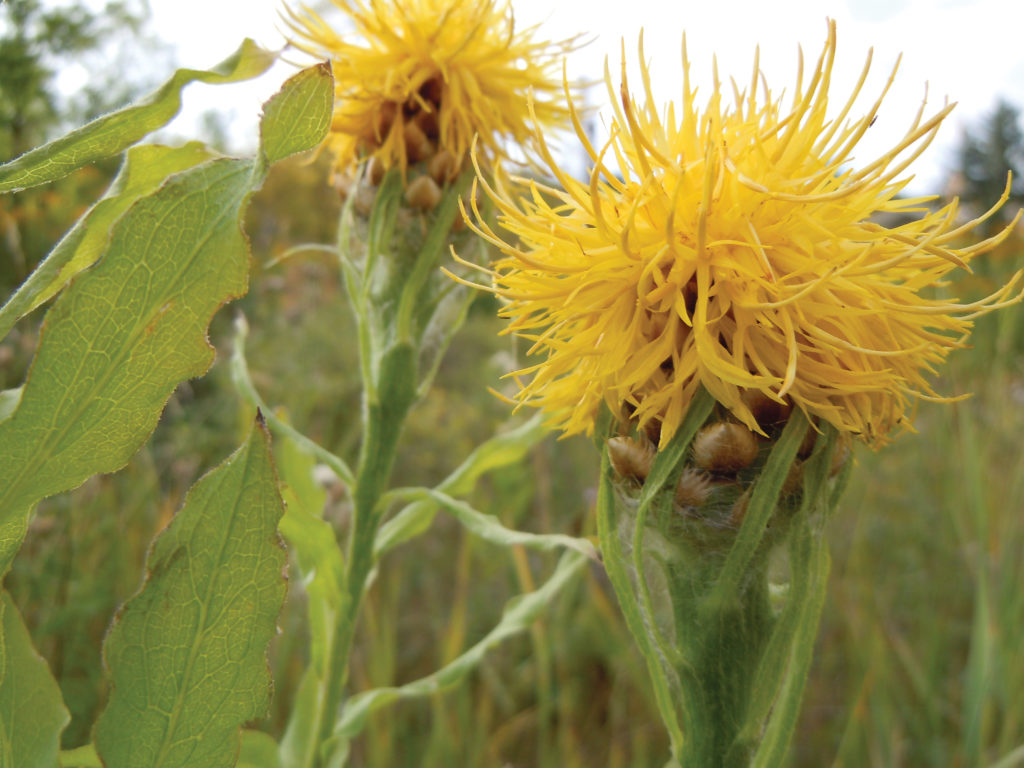
This perennial, Bighead Knapweed, has large single yellow flowers and large, broad, rough, hairy leaves that have pointed tips. It grows up to 1.5 metres tall. The roots are woody.
For more information on identification and prevention, visit https://abinvasives.ca/fact-sheet/knapweed-bighead/
Creeping Bellflower (Campanula rapunculoides) – Category: Noxious
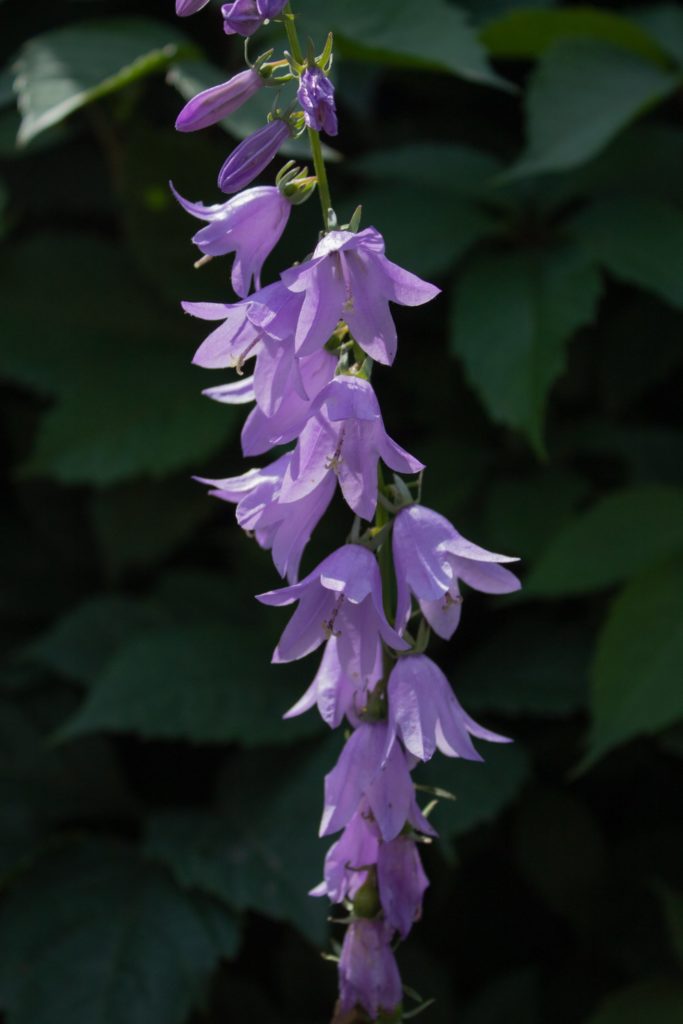
This highly invasive perennial, the Creeping Bellflower, has heart-shaped leaves with serrated edges, alternately arranged on non-branching stems. The plant ranges from 20-60 cm tall. The flowers are bell shaped, blue or purple, and grow on a spike.
For more information on identification and prevention, visit https://abinvasives.ca/fact-sheet/creeping-bellflower/
Yellow Clematis (Clematis tangutica) – Category: Noxious
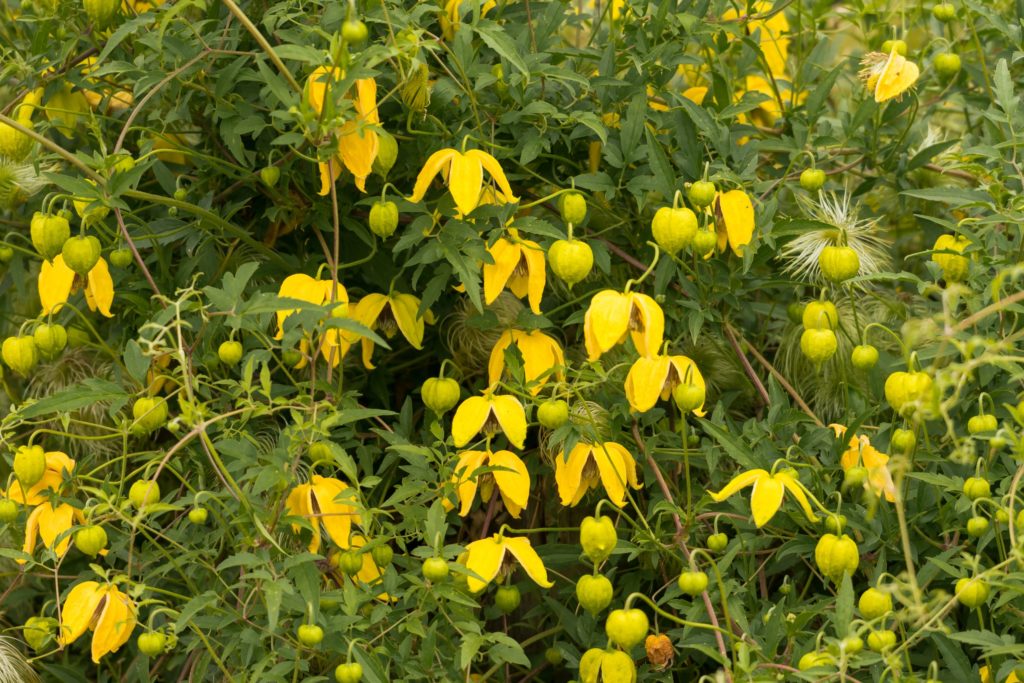
The Yellow Clematis is a perennial vine with leaf tips that are pointed and leaf edges are coarsely toothed. Leaves may be slightly hairy on the underside and are deciduous. Flowers are lemon-yellow, nodding, with four petals. Flowers are bell-shaped at first and then split as the petals spread. Petals may be silky-hairy on the outside and occasionally tinged purplish-brown.
For more information on identification and prevention, visit https://abinvasives.ca/fact-sheet/yellow-clematis/
Common Baby’s Breath (Gypsophila paniculate) – Category: Noxious
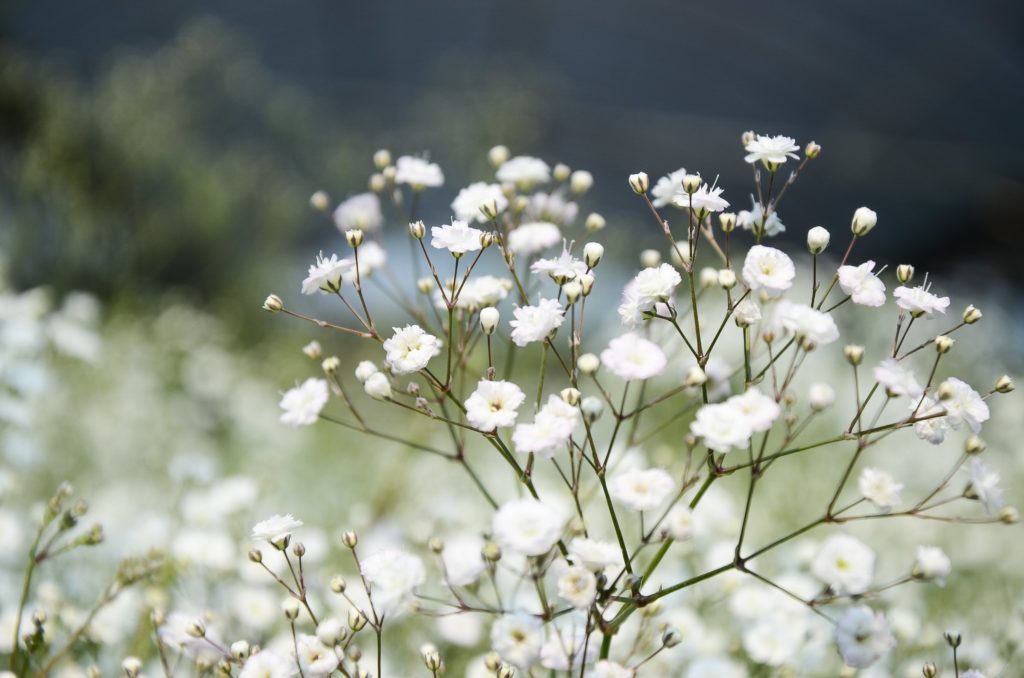
Common Baby’s Breath branches out and can be considered “bushy”. It produces tiny white scented flowers with five petals. It can grow up to one meter tall.
For more information on identification and prevention, visit https://abinvasives.ca/fact-sheet/babys-breath/
Dame’s Rocket (Hesperis matronalis) – Category: Noxious
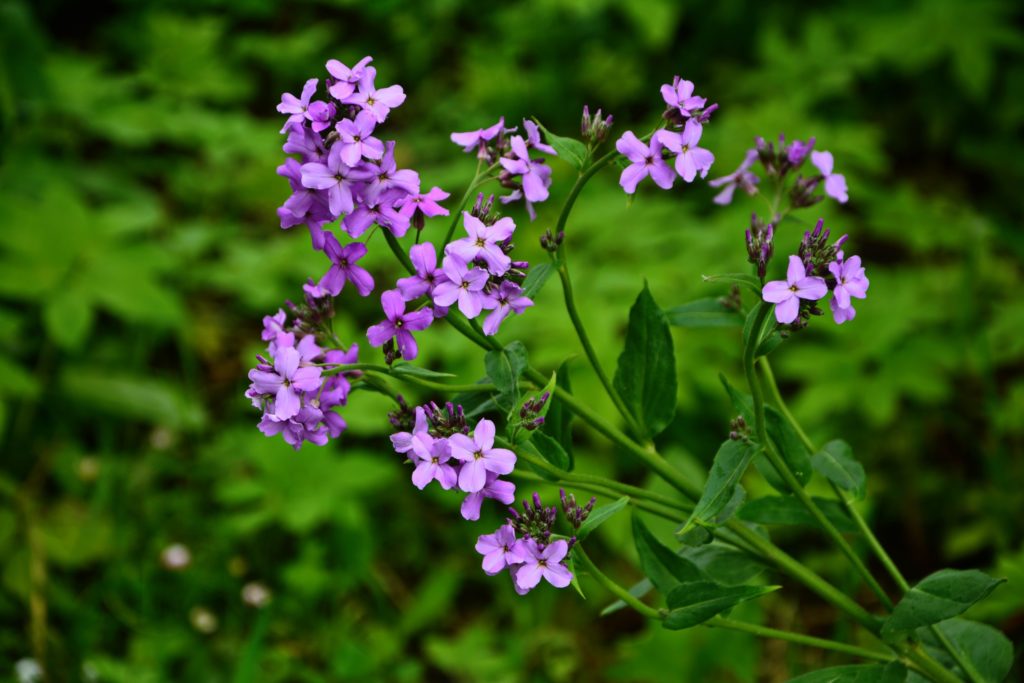
Dame’s Rocket has leaves that are slightly hairy, oblong, with sharp edges. It produces white, pink, or purple flowers with four petals. Flowers can be found in loose clusters on the end of stems.
For more information on identification and prevention, visit https://abinvasives.ca/fact-sheet/dames-rocket/
Oxeye Daisy (Leucanthemum vulgare) – Category: Noxious
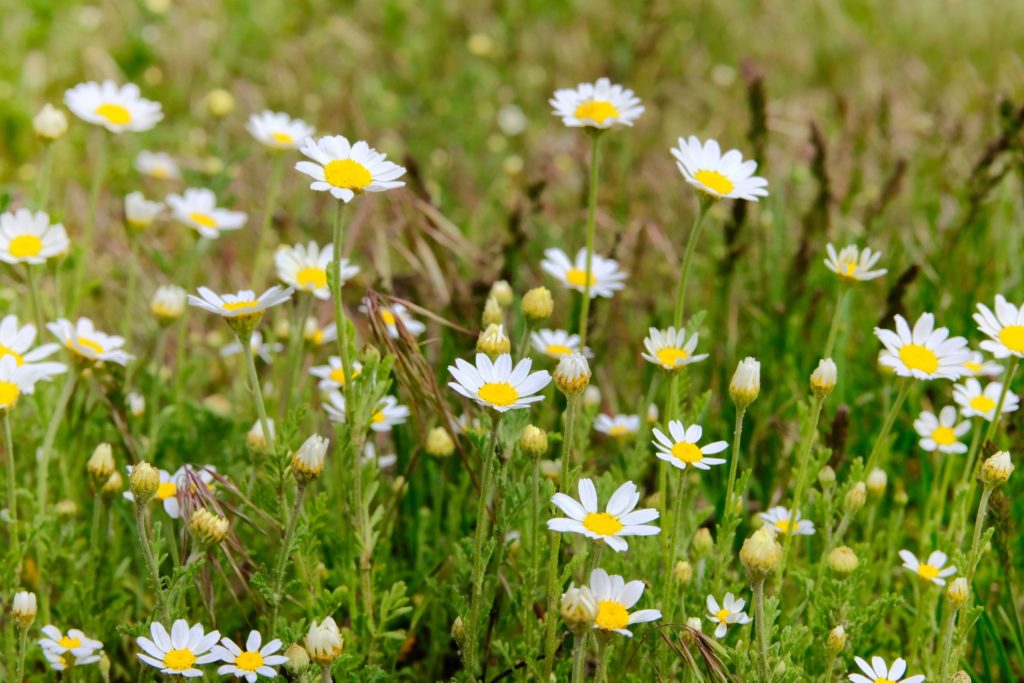
The oxeye daisy is easy to identify with its large, round flower heads that appear on single, tall stems. It has spoon-shaped leaves at its base and thin, jagged leaves along the stem.

